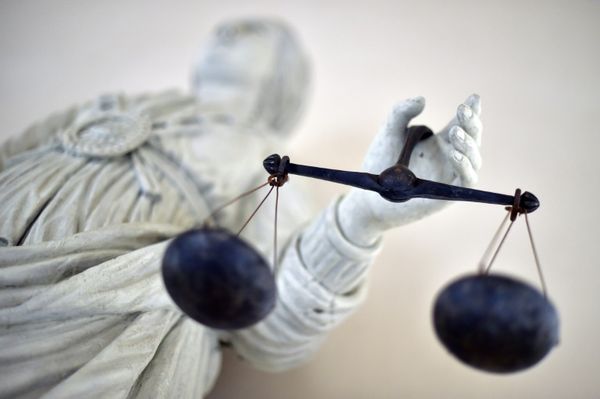
One of three $10 million gem mint 1952 Topps Mickey Mantle cards will be the highlight of the Play Ball! exhibition hosted by Denver’s History Colorado Center from today, July 16 through July 18.
The PSA 10 card (on a scale one to ten) belongs to hobby pioneer and philanthropist Marshall Fogel.
A $14 ticket provides admission to the entire history museum, including the outstanding baseball memorabilia exhibit, which boasts the uniform Joe DiMaggio wore in his final World Series and a game-used Willie Mays glove. Even with all those treasures, Fogel’s Mantle undoubtedly will be the star.

Unfortunately, ESPN’s Darren Rovel was confused about the all-inclusive ticket price and tweeted, “Very few will pay $14 to view [only the Mantle].”
We know Rovell is wrong about what the ticket covers, but he also might be wrong about what visitors would pay to see just the card.
To test what the market would bear, there’s an apt American precedent from the world of fine art.
In 1866 Albert Bierstadt, a leader of the Hudson River School of painting, completed his masterpiece landscape, “Storm in the Rockies,” a melodramatic depiction of big mountains, a thunderstorm, and Native Americans hunting deer.
The 8-by-13 feet, 298-pound, world-renowned behemoth takes up an entire wall of the Brooklyn Museum, where I enjoy visiting it. (Many years ago, in knee-high snow in the early spring, I went on a quest to the actual location which, coincidentally, is a mere 56 miles from the History Colorado Center. I was a little disappointed to see that, as his detractors have noted, Bierstadt had greatly exaggerated the mountains’ scale).
To make money, Bierstadt showed his work around the country for a year. Notes the Brooklyn Museum, “Canvases like this one were a forerunner of today’s movies–you would be charged admission to see works such as this. The larger and more dramatic the better!” (Other painters at the time sold tickets as well.)

Bierstadt didn’t only line his own pockets. For example, he loaned out the painting for one day and evening at an art gallery in New York City to raise funds for the “Nursery and Child’s Hospital,” according to a small notice in The New York Times. (After New York, the painting traveled to D.C., Baltimore, Philadelphia, Boston, Chicago, St. Louis; even to London, Paris and Munich.)
Similarly, Fogel is helping to raise money for the Colorado museum’s good cause.
Bierstadt’s work would “sometimes [appear] in the carnival atmosphere of a draped and darkened room that could be entered only for a fee,” noted a New York Times critic in 1991. For dramatic effect “these theatrical chambers” would be well lit, perhaps with candles or gas lights.
The Mantle card will be shown in a separate section of the Colorado museum and housed in its own custom case with UV-lens protection and temperature and humidity control. The baseball card is worth $10 million, as I’ve previously reported. When first issued in 1952 it cost a penny.

So, too, is the painting, it turns out. “The auction record for Bierstadt is just shy of $8 million, but important works by the artist have sold for significantly more through private sale,” Aviva Lehmann, director of American Fine Art, Heritage Auctions New York, told me. “Considering this is such an iconic one, with excellent provenance, I can absolutely see it selling for $10 million or more.”
As long as we’re consulting a fine art expert, maybe it’s time to accord the ’52 Mantle the same respect.
Jason Hanson, History Colorado’s chief creative officer and the lead curator of the Play Ball! exhibit, provided an elegant critical assessment for Forbes:
“There’s this wonderful pop art quality to the Mantle card. He stands in a heroic pose against a brilliant sky-blue background, shouldering his bat as he gazes up into the distance. It’s the sort of iconic portrait an artist might have created to celebrate Mantle’s spectacular achievements in retrospect, but somehow Topps got it exactly right at the beginning.
Today, nearly 70 years later, the card’s vivid colors, clean lines, and larger-than-life depiction of a hero – even the star-lined marquee with Mantle’s signature – are a portal to another time in American history. The ’52 Mantle beautifully captures the simplicity and heroism fans associate with baseball’s golden era in the middle of the twentieth century. The chance to see the authentic, most perfect example of it in real life – just like the chance to see any artistic masterpiece – is an opportunity to be transported and to gain new insights into our shared past and who we are today.”
The history museum’s attention to our “shared past” is helping preserve a magical bygone era when baseball was our only major sport and superheroes like Mickey Mantle were worshipped.
Bierstadt, like the rest of the Hudson River School, was honoring our nation’s natural heritage, at a moment when the North American continent was under rapid development. Bierstadt was, at heart, an early conservationist. Fogel and the museum are honoring out nation’s cultural heritage.
Perhaps, best of all, both art forms are a drawing card for youth. I recently met a major sculptor based in Brooklyn. Her two teen-age boys’ favorite piece in the magnificent Brooklyn Museum is— you guessed it— Bierstadt’s “Storm in the Rockies.” Classic landscape painting is accessible to people of ages. For many children, it is the first introduction to fine art.
I predict that Marshall Fogel’s Mantle will match Bierstadt in popularity, perhaps even exceed it. “I am really happy that my card will exhibit in my local community,” Fogel told me with his unmistakable eloquence and sincerity. “I want to watch the peoples’ faces, especially the children and grandchildren, to see the sparkle in their eyes.”








